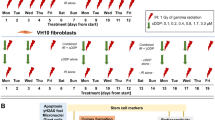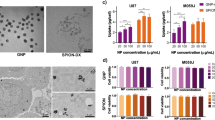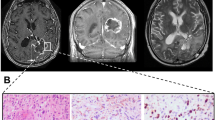Abstract
Radioiodinated iododeoxyuridine (IUdR) is a novel, cycle-specific agent that has potential for the treatment of residual malignant glioma after surgery. As only cells in S-phase incorporate IUdR into DNA, a major limitation to this therapy is likely to be proliferative heterogeneity of the tumour cell population. Using a clonogenic end point, we have compared the toxicities of three radioiodoanalogues of IUdR--[123I]IUdR, [125I]IUdR and [131I]IUdR--to the human glioma cell line UVW, cultured as monolayers in the exponential and the plateau phase of growth and as multicellular spheroids. Monolayers treated in the exponential growth phase were most efficiently sterilized by [125I]IUdR (concentration resulting in 37% survival (C37) = 2.36 kBq ml(-1)), while [123I]IUdR and [131I]IUdR were less effective eradicators of clonogens (C37 = 9.75 and 18.9 kBq ml(-1) respectively). Plateau-phase monolayer cultures were marginally more susceptible to treatment with [123I]IUdR and [125I]IUdR (40% clonogenic survival) than [131I]IUdR (60% clonogenic survival). In cells derived from glioma spheroids, both [125I]IUdR and [123I]IUdR were again more effective than [131I]IUdR at concentrations up to and including 20 kBq ml(-1). However, the survival curve for [131I]IUdR crossed the curves for the other agents, resulting in lower survival for [131I]IUdR than [123I]IUdR and [125I]IUdR at concentrations of 40 kBq ml(-1) and higher, the clonogenic survival values at 100 kBq ml(-1) were 13%, 45% and 28% respectively. It was concluded that IUdR incorporating the Auger electron emitters 123I and 125I killed only cells that were in S-phase during the period of incubation with the radiopharmaceutical, whereas the superior toxicity to clonogenic cells in spheroids of [131I]IUdR at higher concentration was due to cross-fire beta-irradiation. These findings suggest that [131I]IUdR or combinations of [131I]IUdR and [123I]IUdR or [125I]IUdR may be more effective than Auger electron emitters alone for the treatment of residual glioma, if proliferative heterogeneity exists.
This is a preview of subscription content, access via your institution
Access options
Subscribe to this journal
Receive 24 print issues and online access
$259.00 per year
only $10.79 per issue
Buy this article
- Purchase on Springer Link
- Instant access to full article PDF
Prices may be subject to local taxes which are calculated during checkout
Similar content being viewed by others
Author information
Authors and Affiliations
Rights and permissions
About this article
Cite this article
Neshasteh-Riz, A., Mairs, R., Angerson, W. et al. Differential cytotoxicity of [123I]IUdR, [125I]IUdR and [131I]IUdR to human glioma cells in monolayer or spheroid culture: effect of proliferative heterogeneity and radiation cross-fire. Br J Cancer 77, 385–390 (1998). https://doi.org/10.1038/bjc.1998.61
Issue Date:
DOI: https://doi.org/10.1038/bjc.1998.61
This article is cited by
-
Monitoring Tumor Response with Radiolabeled Nucleoside Analogs in a Hepatoma-Bearing Mouse Model Early After Doxisome® Treatment
Molecular Imaging and Biology (2013)
-
Noradrenaline transporter gene transfer for radiation cell kill by 131I meta-iodobenzylguanidine
Gene Therapy (1999)



